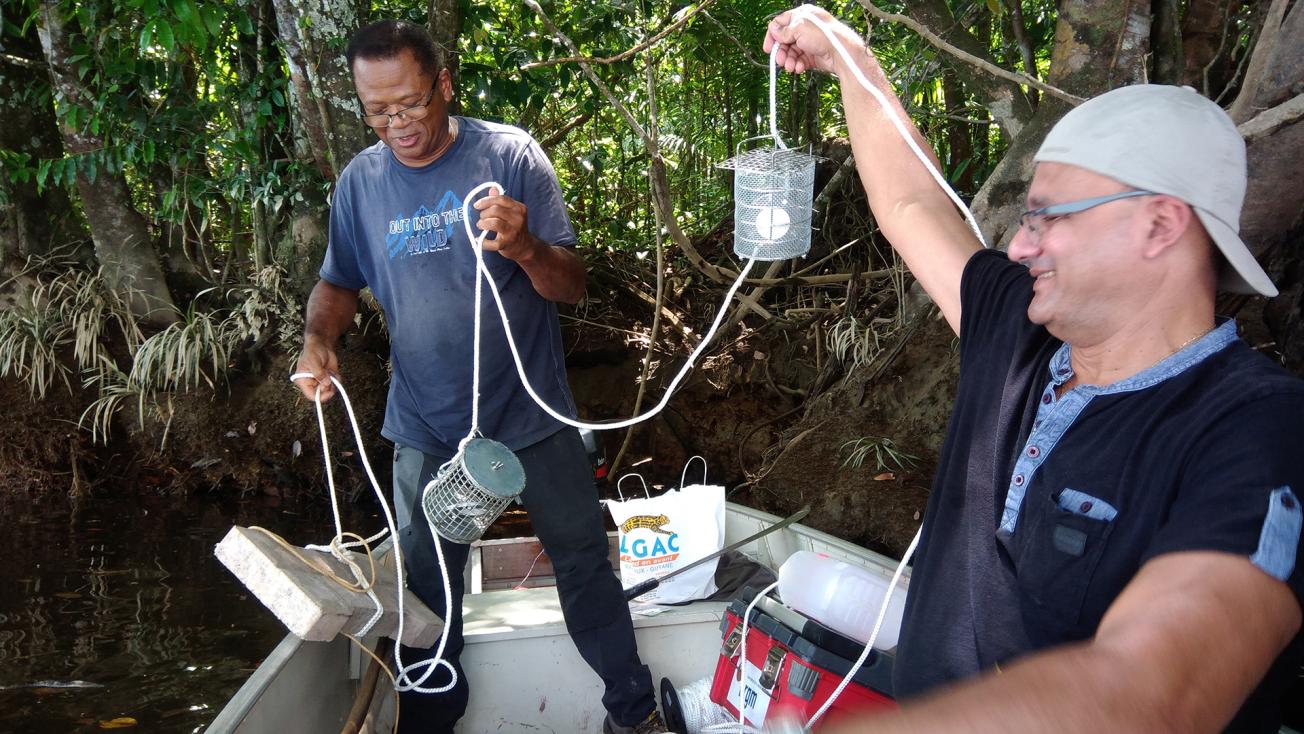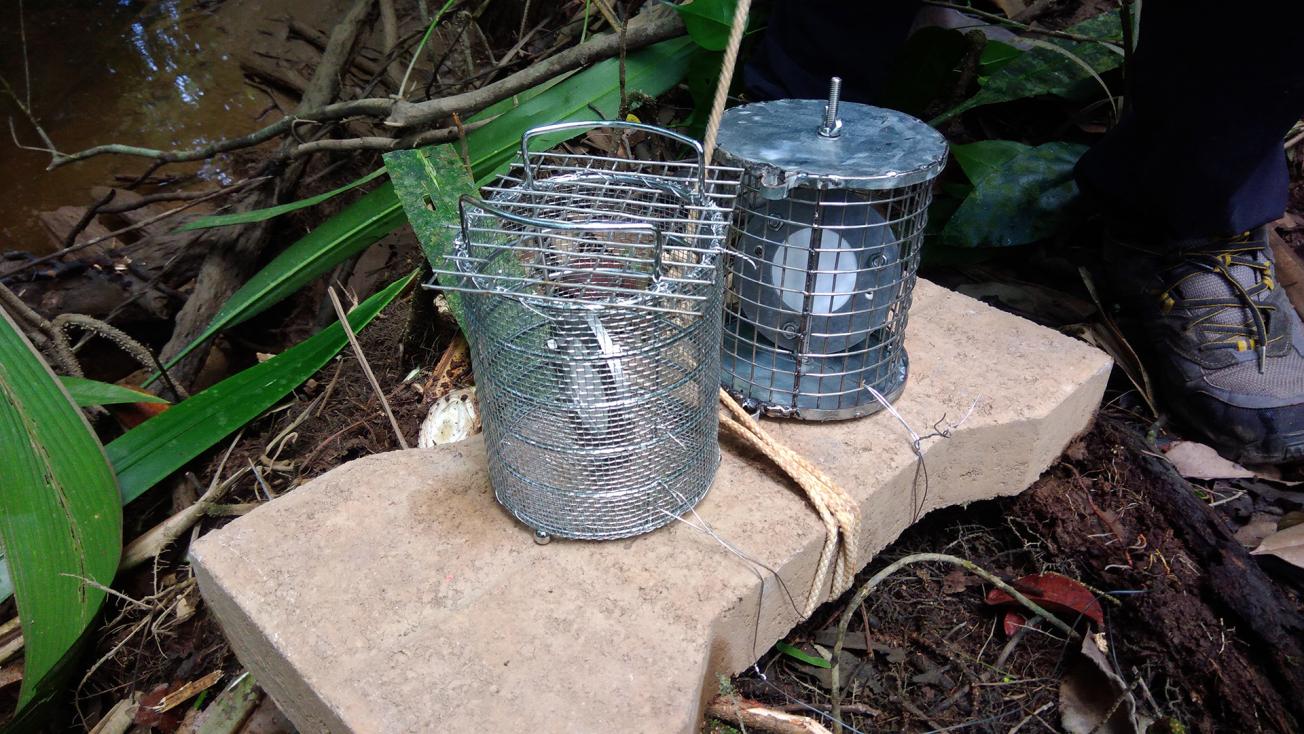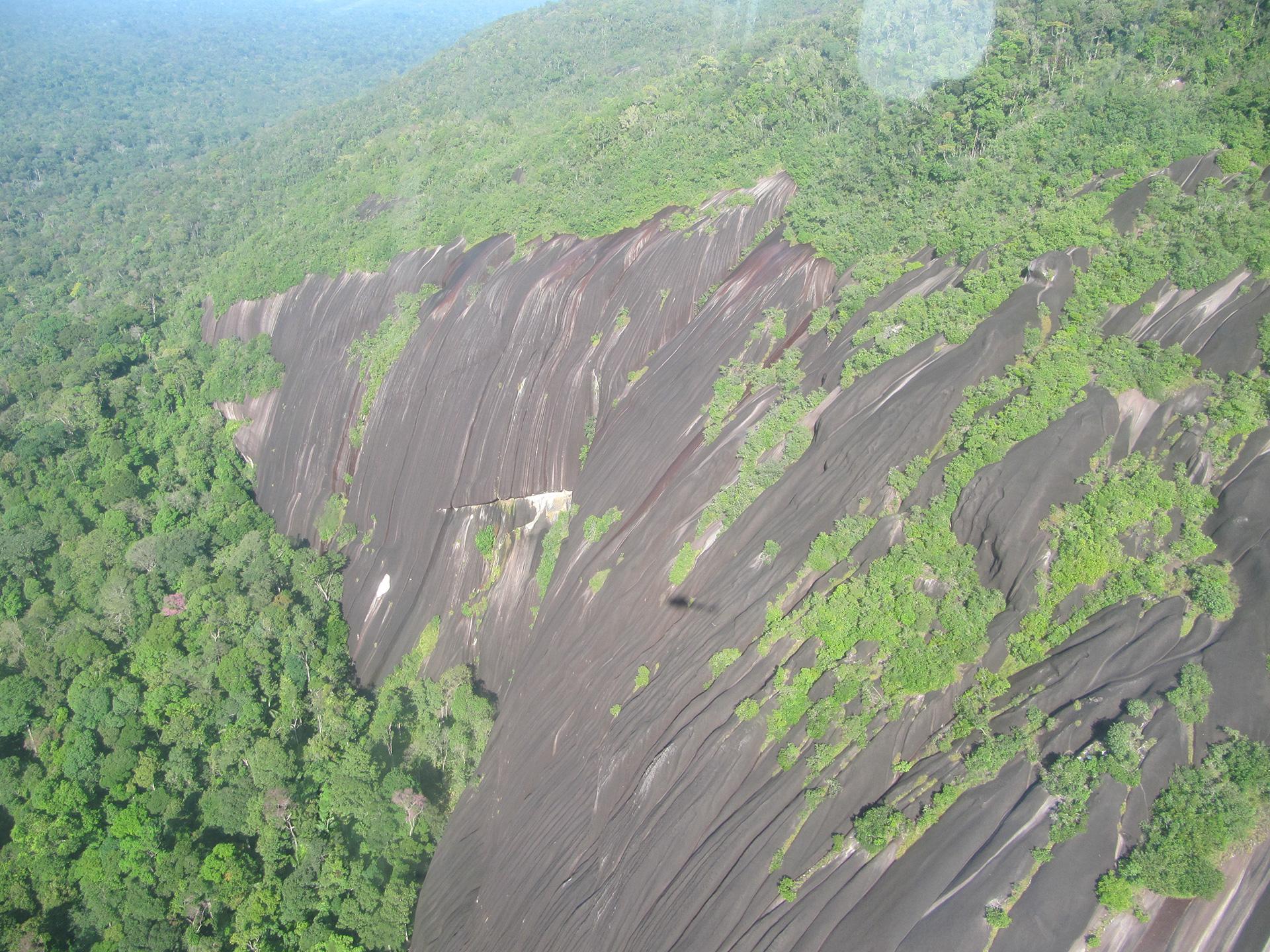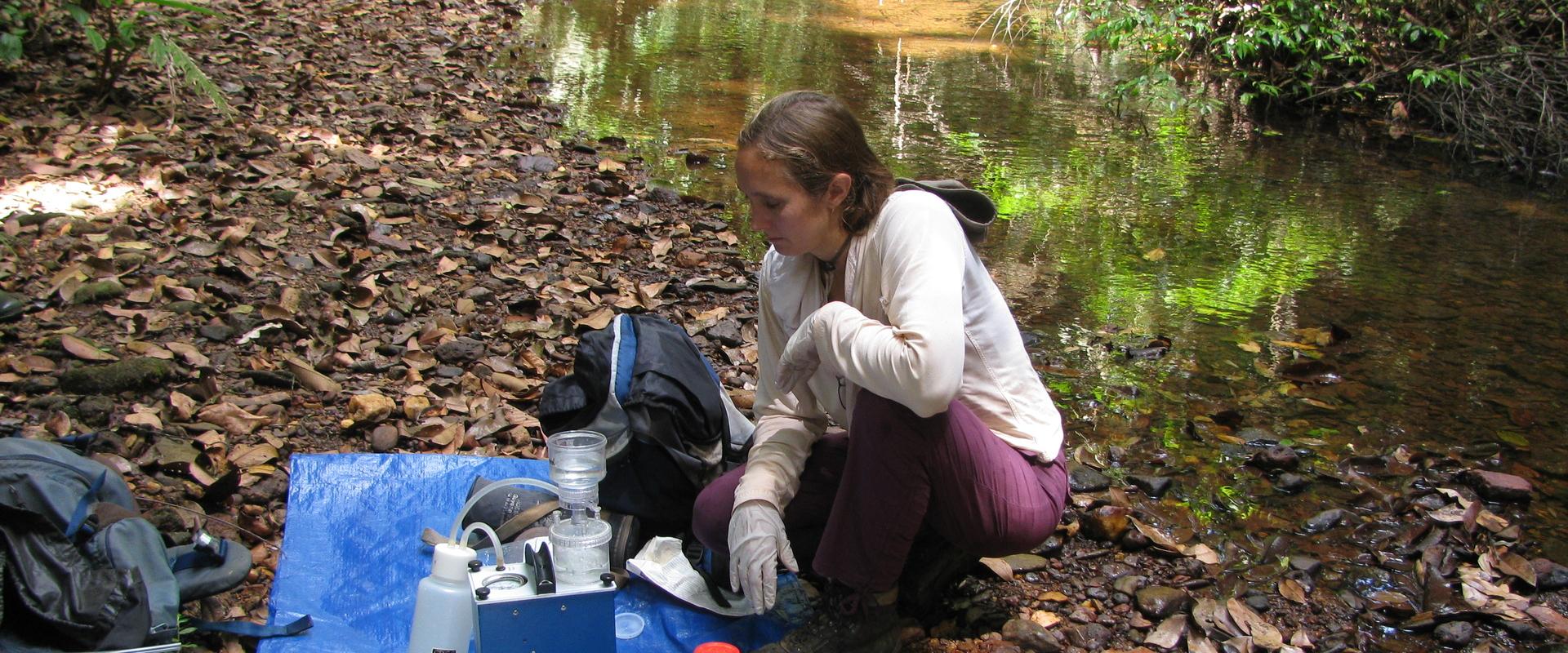
Preparation of POCIS and MIP in the Kourou river in Kourou (French Guiana).
© BRGM - Paul Lecomte
The need
In French Guiana, analyses at the Matiti water intake on the Kourou River reveal various dangerous substances, some of which are identified as part of the regulatory monitoring process, whereas others are prohibited by law. It is necessary to be able to determine their presence and concentration in the water sampled, on the one hand, and on the other, the impact that agricultural activities in the area concerned might have.
The results
Installed in cages, passive POCIS and MIP samplers, developed by the BRGM laboratory, were placed in the tributaries that drain the farming areas into the Kourou river, upstream of the creeks and at the catchment intake station. These devices involve a solid-adsorbant phase between two semi-permeable microporous membranes, which makes it possible to detect pollutant flows by accumulating polar organic contaminants (hydrophilic) at very low doses that are present in the aqueous phase. These two devices play the same role but do not target the same group of substances. Two campaigns were carried out, the first in the dry season and the second in the rainy season with an exposure duration varying from three to four weeks.

Preparation of POCIS and MIP in the Kourou river in Kourou (French Guiana).
© Maxime Lhotelin
While in the dry season, no traces of plant protection products were found, during the rainy seasons, traces of glyphosate and diuron were found, showing the possible drainage of agricultural land by rainwater and/or the use of plant protection products to limit the development of fungi and invasive plants. Concentrations of these substances in water were calculated from the quantities measured on the membranes. Traces of glyphosates range from 4.2 to 15.7 ng/l depending on the station, while diuron was only found at one of the stations located in a tributary of the Kourou river at 0.8 ng/l. Given the short time of exposure, it is likely that actual concentrations will vary over time depending on the intensity of agricultural practices or rainfall leaching off crop protection products. There is also an increase in concentrations from upstream to downstream, probably due to lateral contributions at the creeks carrying glyphosate (from 7.9 ng/l for the upstream station to 15.5 ng/l for the station the furthest downstream). Furthermore, it is likely that there is also glyphosate upstream of agricultural areas, given the traces found at this station. Concomitantly with this monitoring method, spot samples were taken to detect traces of atrazine (27 ng/l). As a reminder, the Water Framework Directive sets the quality limit for the presence of pesticides in drinking water at 0.1 micrograms (100 nanograms) per litre.
Using the results
The detection of traces of these phytosanitary products in rivers using the passive sampler monitoring method, is a first in French Guiana. This study should be continued, by renewing and extending these campaigns, in order to reveal the evolution of these pollutants and identify other sources of upstream pollution.
The partners
Communauté d’Agglomération du Centre Littoral

The Matiti drinking water treatment, production and supply plant on the Kourou River is a strategic tool for the Communauté d'Agglomération du Centre Littoral to ensure the supply of quality water in its territory. The strong demographic pressure in French Guiana is in itself a major challenge for the community. It is therefore obvious to the CACL that the monitoring and preservation of water resources is a daily priority. The partnership between CACL and BRGM for studying and monitoring pollution by phytosanitary products in the Kourou River is part of this approach to maintaining the quality service provided to all users of the drinking water supplied.







